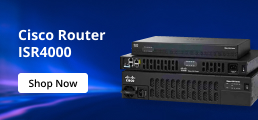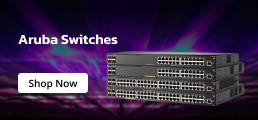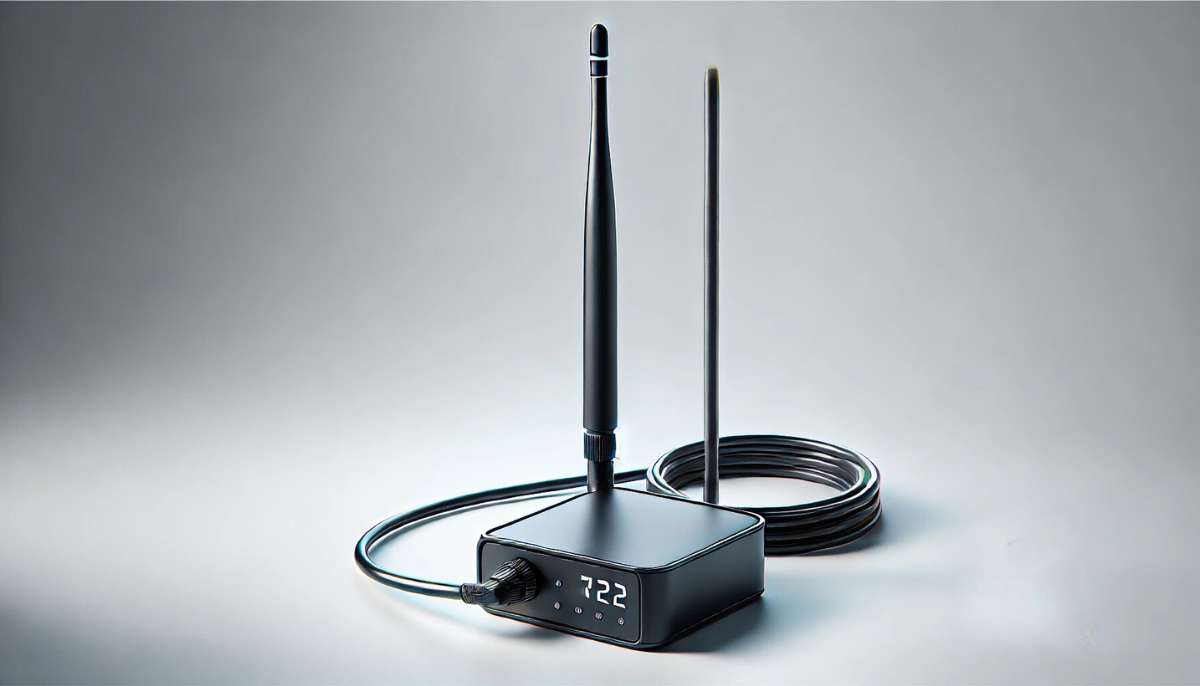What Is WiFi Antenna: Things You Must Know In 2024
Table of content
Introduction
WiFi networks are paramount for connectivity everywhere. Whether it is a home, a small office, or a large organization, WiFi has become a necessity. At this point, the built-in antenna in wireless access points faces challenges. This is where a WiFi antenna comes in to improve the range of your signals to make it available everywhere you want for a smooth connection. In this guide, we’ll discuss what WiFi antennas are and why you need them. In addition, we’ll go through their core features, appropriate use cases, and various types.
What is a WiFi Antenna
An essential part of Wi-Fi communication systems, a Wi-Fi antenna can be used as a transceiver transmitter, receiver, or both. For internet connectivity, it allows devices to send and receive radio frequency (RF) waves. When given electric power, it can function in one of two ways: either by radiating radio waves or by turning them back into electric power. Wi-Fi antennas come in a variety of sizes and shapes and are made to function well in certain frequency ranges for both radiation and reception. The frequencies used for Wi-Fi communications are usually in the 2.4, 5, and 6 GHz bands.
How Does a WiFi Antenna Work?
WiFi antennas work in simple ways.
Wireless devices communicate with one another using radio waves that are electromagnetic waves with packets of information. A WiFi antenna converts these electromagnetic waves into electrical signals.
Wireless devices, including routers, smartphones, laptops, and tablets, have antennas through which these devices receive and transmit signals.
The receiving antenna receives electromagnetic waves and converts them into electric signals for devices. The transmitting antenna converts electrical signals back into electromagnetic waves to transfer information packets.
Types of WiFi Antennas
WiFi antennas come in two primary types: Omnidirectional and Directional. Let’s discuss them separately.
Omnidirectional Antennas:
They emit signals in all directions with 360-degree coverage, similar to how a lightbulb brightens an entire room. While they cover a wide area, their range is typically shorter compared to directional antennas.
Omnidirectional antennas also come in various types, which include outdoor antennas for extending coverage outdoors, ceiling dome antennas for indoor use in spaces like offices, and rubber duck antennas, often seen on routers and USB WiFi adapters.
Directional Antennas:
These WiFi antennas concentrate their signal in one direction, much like a flashlight beam, enabling them to cover longer distances but in a narrower area. These antennas are ideal for long-range point-to-point or point-to-multipoint networks.
Some common types of directional antennas include Yagi antennas, with a focused radiation pattern of 45 degrees, and panel antennas, which offer even stronger signals over long distances, with radiation patterns of 35 to 60 degrees. These are commonly used for bridging internet connections between buildings or improving indoor WiFi performance.
Where To Use A WiFi Antenna?
Some common applications and scenarios for using WiFi antennas are discussed below:
Wireless Networking:
Wi-Fi antennas are necessary to create a network that allows devices like laptops, tablets, and smartphones to connect to the internet or one another without the need for wires.
Internet Access:
Devices can connect to routers by Wi-Fi antennas to access webpages, cloud-based apps, and online services via wireless internet access.
Data Transfer:
Data transfer between wireless devices is made possible by Wi-Fi antennae. File sharing, streaming, video conferencing, and other functions are made possible by this.
IoT (Internet of Things:
Wi-Fi antennas allow Internet of Things (IoT) devices, including wearables, sensors, and smart home appliances, to connect to the Internet and share data, enabling remote control, data analysis, and gathering.
Wireless Surveillance Systems:
Using Wi-Fi antennas, wireless security cameras, and monitoring systems, you can send video footage and other data to distant places for security and surveillance needs.
Wireless Audio and Entertainment:
Wi-Fi antennas are used by devices like headphones, speakers, and entertainment systems to send audio signals wirelessly, eliminating the need for cords.
How To Choose Right WiFi Antenna for Your Needs?
Here are some simple steps that lead you to wise decision when choosing an antenna for your WiFi:
- Choose an antenna compatible with the frequency range of your WiFi router. (2.4GHz, 5GHz, 6.4GHz, or higher).
- Ensure the antenna’s gain fits your needs, with higher gain for long distances but narrower coverage.
- Match the polarization (vertical or horizontal) of antennas for optimal WiFi signal performance.
- Select appropriate beamwidth: narrow for long-distance links, wider for larger area coverage.
- Ensure the antenna’s power handling capacity matches your environment and requirements.
- Go for weather-resistant antennas for outdoor use, with UV and moisture protection.
- Consider the antenna’s size and design for blending into your environment and avoiding damage.
- Choose an antenna with the correct connector type (RP-SMA, SMA, or N-type) for compatibility.
- Select the right coaxial cable series (e.g., RG-58, LMR400) based on specifications and usage.
- Minimize signal loss by selecting proper coaxial cable length and impedance matching.
- Ensure WiFi antenna compatibility with your other devices, like routers and network adapters.
- Choose the right mounting option based on where you plan to install the antenna.
- Consider professional installation if you’re unsure or have complex antenna requirements.
Top 5 WiFi Antennas To Boost Performance
Alfa 9dBi WiFi Antenna:
It is an omnidirectional antenna known for better signal reception and wide range.
TP-Link TL-ANT2409A:
Designed by TP-Link, it extends the overall coverage of your network as well as the wireless range.
NETGEAR Nighthawk AC1900:
It is a high-gain, dual-band, directional antenna that offers excellent performance for long-range distances.
Asus AC68 Dual-Band Wi-Fi Antenna:
This antenna provides a 3×3 MIMO design for upgraded signal strength and stability.
Where To Buy A WiFi Antenna At Fair Rates?
Looking for a reliable platform to shop for a WiFi antenna? Fret not! Buy router switch is a reliable, recognized, and low-rate company for networking accessories and products. We deal in best-brand routers and switches, as well as in wireless APs and servers. Thus, reach out to us anytime and shop advanced networking products at the best-ever rates.
Conclusion
WiFi antennas not only expand the range but also improve signal strength. They are applicable when a wireless built-in antenna fails to meet your expectations. Being available in two main and 7 to 8 subtypes, WiFi antennas are an option for different scenarios from homes, and small offices, to large organizations. In this blog, we have provided you with an in-depth guide on WiFi antenna and its different aspects. In addition, we mentioned the factors to consider when choosing a WiFi antenna for you. Still, if you are confused or want to explore further topics like WiFi Access Point and WiFi Card.
Frequently Asked Questions
What to look for in a WiFi antenna?
You can make sure that your wireless network operates at its best by considering factors like antenna types, gain, polarization, beamwidth, environment, device compatibility, frequency band, future network requirements, and brand reliability.
What is the purpose of a Wi-Fi antenna?
The purpose of a Wi-Fi antenna is to improve internet and device connectivity. The Wi-Fi signal’s strength and connection speed within the house or adjacent areas can be greatly affected by the device’s positioning.
Does a WiFi router need an antenna?
The power and range of a WiFi network are largely dependent on its WiFi antennas. These antennas facilitate the transmission and reception of data-carrying radio waves. While some routers include internal antennae, the majority have one or more external ones.




 Catalog
Catalog





















































































































 (800) 870-9487
(800) 870-9487